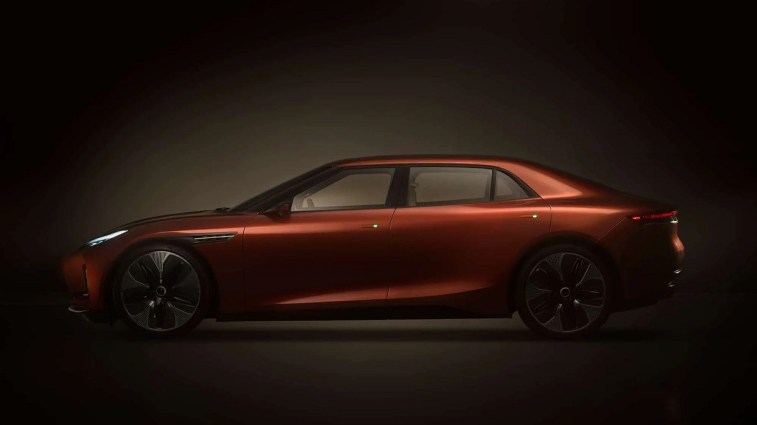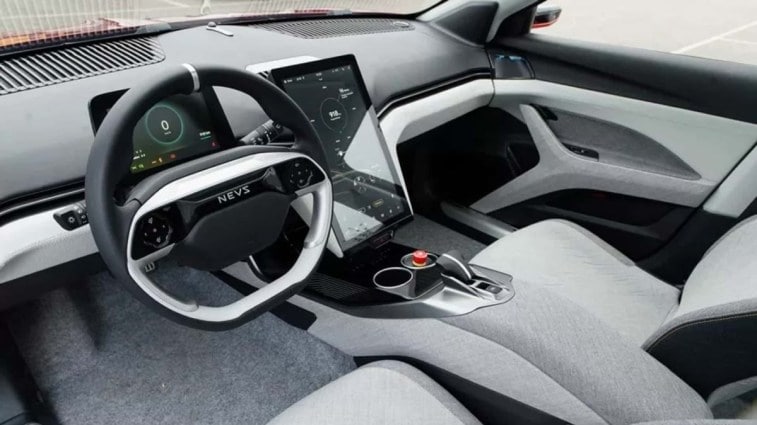
Emily? You know… the Saab.
Meet the Saab Emily GT. Well, okay, formally, this is just the Emily GT. It’s an electric vehicle (EV) with 480 horsepower and a range of 621 miles (with a big asterisk).
It will probably never exist. But the rights to build it are up for sale.
Related: New DeLorean Alpha5 EV: Electric Power, Electronic Hugs
Saab Story
The automaker formally known as Saab has been on a long, difficult journey with multiple endings. Another ending came last week.
The company sold cars in the U.S. from 1956 until the early 2010s. It established a cult following and still has legions of fans. Their hearts must be breaking this week at the sight of what could have been.
General Motors acquired the company in 2000 but struggled to make a profit with it. GM sold it to exotic carmaker Spyker as part of its post-2008 recession restructuring.
Spyker did no better with it, and the brand declared bankruptcy in 2011. Later, a startup called NEVS (National Electric Vehicle Sweden) bought the rights to the designs but not the name (which is still used by a defense company once related to the car brand). The trail goes even murkier from there. NEVS appears to be at least part-owned by China’s Evergrande Group.
Whoever owns it, NEVS has now shut its own doors. What little is left of its website now says the company is in “hibernation” and offers an email for “any questions about the sale of our properties.”
It turns out that all along, former Saab engineers were still designing cars for the company — including Emily.
Shared on LinkedIn
The U.K.’s Autocar explains that the company “originally signed off a run of 20 prototypes. However, Evergrande – which made its fortune as one of China’s most prolific property developers – hit financial problems in 2020, and only six were built.”
NEVS Program Director Peter Dahl shared photos and news about the project on LinkedIn, telling former employees, “Now you are free to talk about your contribution to the incredible project.”
Sweden’s Plint Marketing has released photos.
Now, with NEVS disappearing, the design is up for sale. NEVS CEO Nina Selander told Swedish site CarUp, “It is for sale, it is also a joy to be able to show it. It should be allowed to live on, it’s too nice, too good and too modern a car for nothing to come of it.”
An Evolution of Saab, Whatever You Call It
The Emily GT shares obvious lines with the last Saabs, most prominently the final Saab 9-5. But, CarUp says, it uses four electric motors, one per wheel, making 120 horsepower each. A theoretical huge 175 kWh lithium-ion battery would give it a range of 1000 km (621 miles) in European testing. However, tests by the U.S. EPA tend to show much shorter ranges, and “the prototype cars only have a 52-kWh battery.”
The interior is a show-stopper. The minimalist design means just a driver’s instrument screen and a large central touchscreen handles almost all functions, but we see a few buttons on the flat-bottom steering wheel. Open seatbacks are an interesting touch, though they appear to allow for rear entertainment screens mounted low.
Will anything ever come of the Emily GT? It seems unlikely — the design is so quintessentially Saab that it’s hard to imagine it being sold under some other name.
For now, AutoCar notes that Polestar has signed a lease for the famous Saab factory in Trollhättan. But that company’s roots in Volvo probably prevent it from producing a Saab-derived product for the same reason Burger King doesn’t sell Big Macs.
So we’ll have to enjoy the Emily in theory only. But it’s good to see she’s doing so well.









